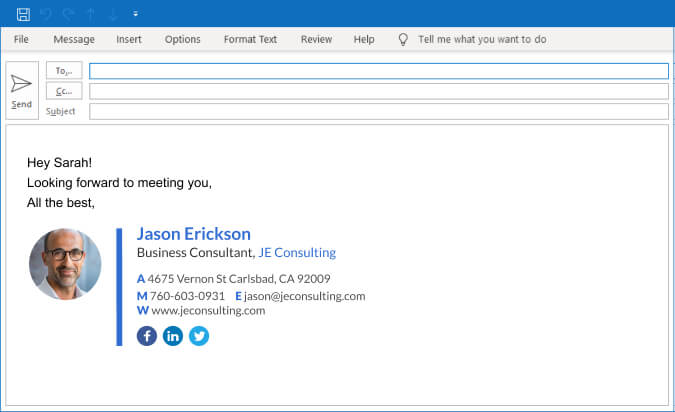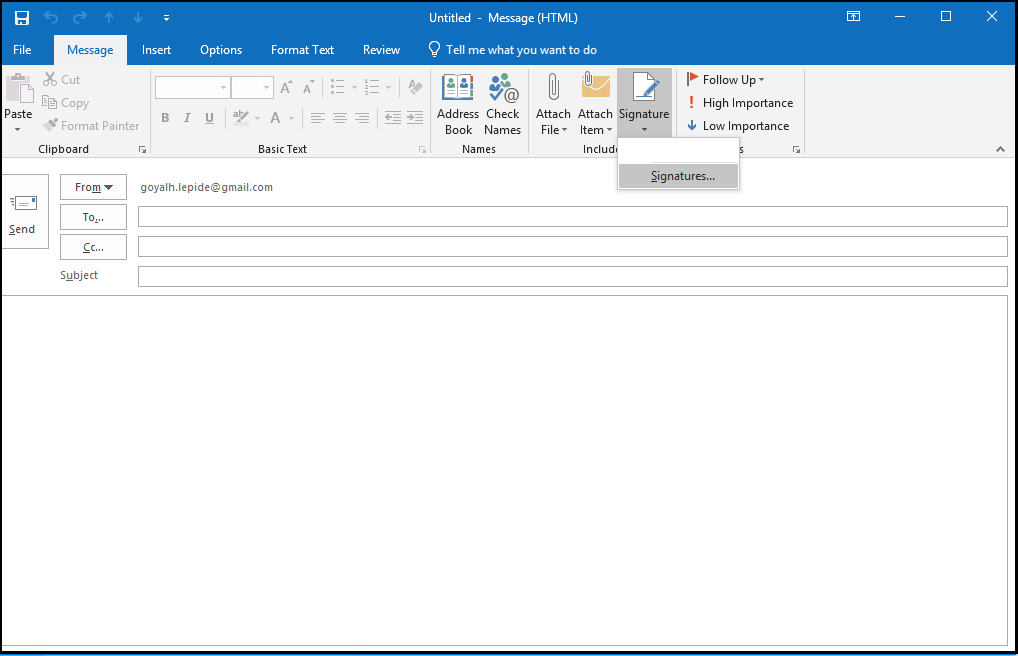

For example, you might create a formal business signature for client correspondence, a casual business signature for interoffice correspondence, and a personal signature for messages sent from another account.

You can create different signatures for use in different types of messages or for use when you’re sending messages from different email accounts. If you'd like to make changes to your signature, just follow steps 1+2 here, ensure your signature is selected in the edit list, make your changes in the edit box, then click "Save".For more information about electronic business cards, see “Personalize electronic business cards” in Chapter 8, “Manage contact records.” You should now find that your signature appears when you open a new message. Once you have made your selections here, simply press "OK". If you'd like it to appear on every message you send, including all replies to messages, select it from the "Replies / Forwards" dropdown too. If you'd like it to appear only new messages, select it from the "New messages" dropdown. Finally, select which emails you'd like your signature to appear on by default. If you wish to add a link to a website, use the icon highlighed here.ħ. If you wish to add an image, use the icon highlighted here.Ħ. You can now add the content you wish to be included in your signature in the "Edit signature" box.ĥ. Click "New", give your signature a name, then press OK.Ĥ. Ensure the "Message" tab is selected and click the "Signatures" button, then the "Signatures." option that appears.ģ. The process is largely identical in the other recent versions.Ģ. Here is a step-by-step guide that explains how to create a signature to automatically append to the footer of your emails using Outlook 2016. HowTo: Add an Email signature in Outlook 2016 Details Graham Burchell HowTo 29 June 2017


 0 kommentar(er)
0 kommentar(er)
